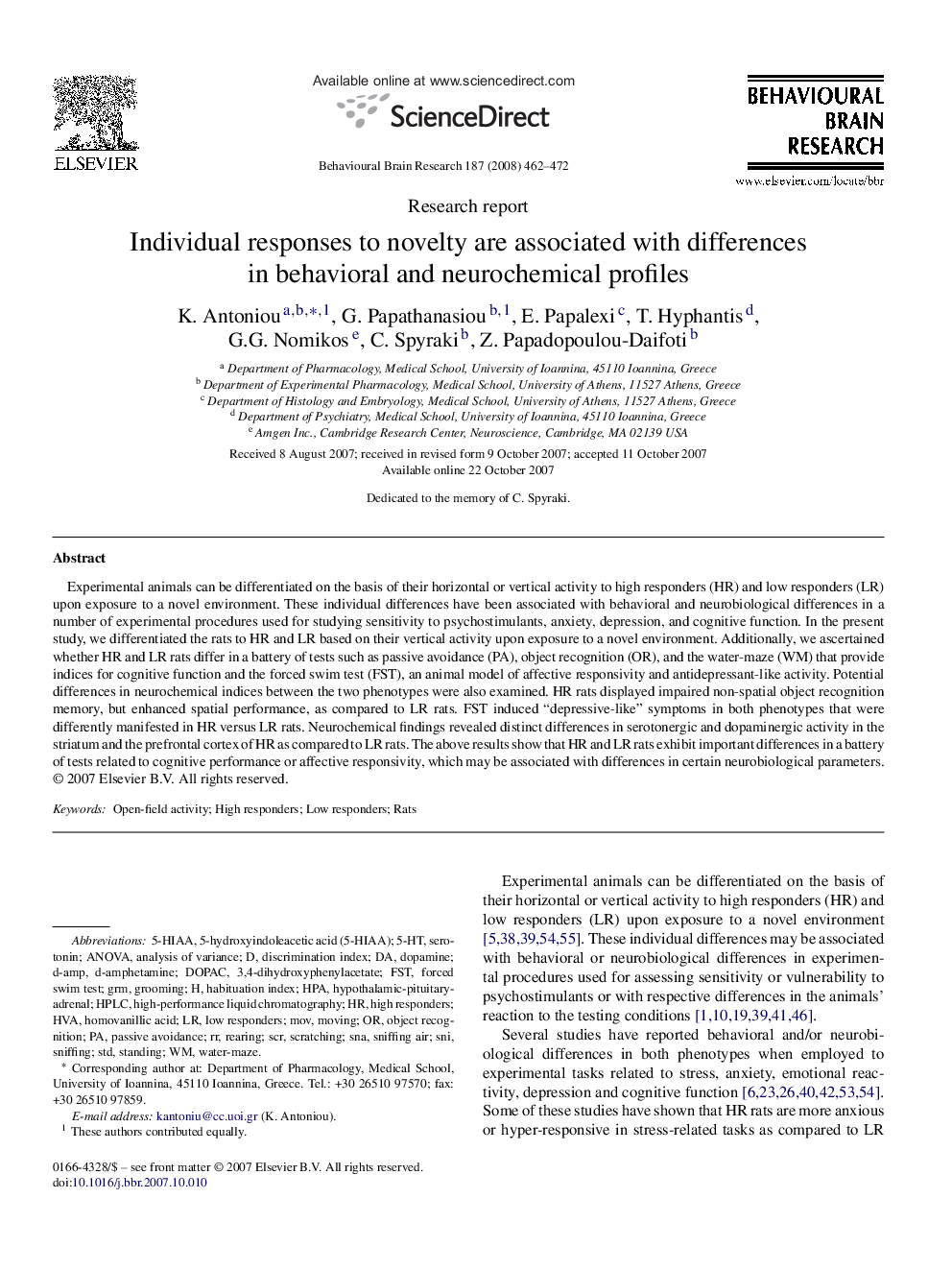| Article ID | Journal | Published Year | Pages | File Type |
|---|---|---|---|---|
| 4315543 | Behavioural Brain Research | 2008 | 11 Pages |
Experimental animals can be differentiated on the basis of their horizontal or vertical activity to high responders (HR) and low responders (LR) upon exposure to a novel environment. These individual differences have been associated with behavioral and neurobiological differences in a number of experimental procedures used for studying sensitivity to psychostimulants, anxiety, depression, and cognitive function. In the present study, we differentiated the rats to HR and LR based on their vertical activity upon exposure to a novel environment. Additionally, we ascertained whether HR and LR rats differ in a battery of tests such as passive avoidance (PA), object recognition (OR), and the water-maze (WM) that provide indices for cognitive function and the forced swim test (FST), an animal model of affective responsivity and antidepressant-like activity. Potential differences in neurochemical indices between the two phenotypes were also examined. HR rats displayed impaired non-spatial object recognition memory, but enhanced spatial performance, as compared to LR rats. FST induced “depressive-like” symptoms in both phenotypes that were differently manifested in HR versus LR rats. Neurochemical findings revealed distinct differences in serotonergic and dopaminergic activity in the striatum and the prefrontal cortex of HR as compared to LR rats. The above results show that HR and LR rats exhibit important differences in a battery of tests related to cognitive performance or affective responsivity, which may be associated with differences in certain neurobiological parameters.
